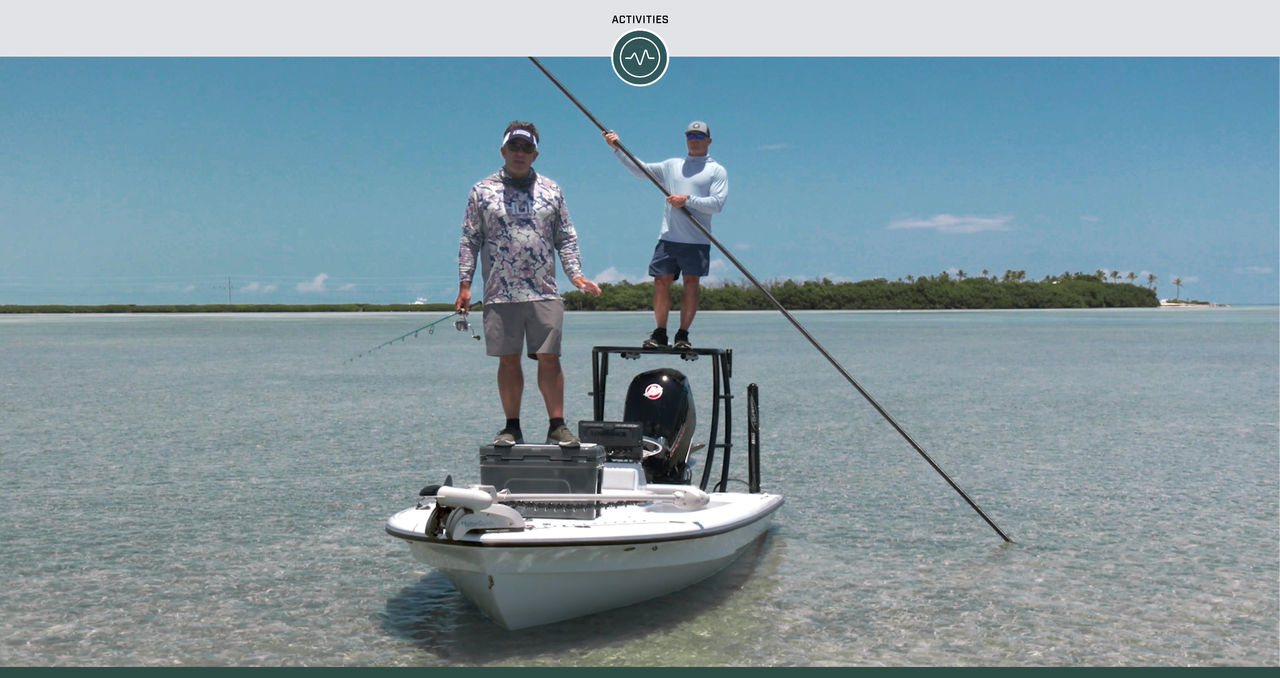Seagrass beds are one of our most valuable marine resources because they support a diverse number of saltwater fish and forage species, including baitfish and crustaceans. Seagrasses, such as turtle grass and shoal grass, play a key role in maintaining water quality by trapping sediments and releasing oxygen during the process of photosynthesis.
Since seagrasses are such an essential part of our saltwater ecosystems, it’s important to prevent seagrass damage through propeller scarring and vessel groundings. When a boat's propeller cuts through a seagrass bed, it destroys the bed and disrupts the species found in that habitat. The negative impacts of careless boating on seagrasses are becoming more and more evident, particularly in busy or highly populated boating access areas.
The environmental importance of seagrasses has led to regulations that can hold boaters responsible for the costs associated with assessing damage, restoring habitat, and the monitoring of restored seagrass. The best way to protect seagrass is by taking the time to prevent any damage to start with. Follow these guidelines when operating your boat in the bays or out on the flats.
Pay Close Attention to Buoys and Channel Markers
Operate your boat in marked channels to prevent running aground, which can damage your boat and seagrass habitat. Stay on the correct side of the channel when approaching channel markers. Pay attention to markers and navigational buoys that warn boaters of dangerous shallows or areas where boats are prohibited by law.
Read the Water
Always wear a good pair of polarized sunglasses while boating to cut through the glare and help you read the water. Polarized sunglasses will not only improve your ability to spot fish, but to avoid seagrass beds, manatees, and other underwater hazards. Amber or copper-colored lenses are generally best for identifying objects on the flats, seagrass beds, and in shallow water.
Consider Your Depth and Draft
When in doubt about the depth, slow down and idle. Be aware of the high and low tide periods so you can plan your route accordingly given the draft of your boat (minimum water depth that the boat can travel through). Use a push pole or trolling motor when fishing out on the flats and when heading back the channel before starting up your motor, then idle slowly out. Never try to motor your way off a seagrass bed, this causes extensive damage to seagrass beds and can damage to your engine as well.
Study Your Charts
Utilize your electronics, navigational charts, fishing maps, and local boating guides to become familiar with new waterways. Nautical charts will show you approximate depths, including shallow areas, which can help prevent you from running aground and damaging seagrass beds.
Additional Advice
Let the Sun Shine Down
Docks, boathouses, docked boats, and other structures can prevent sunlight from reaching the seagrass below. When building or repairing a dock, consider building the dock five feet above the water and use grating rather than planks. Extend the dock into deeper water if necessary, so that your boat does not shade any seagrass beds.
Educate Yourself About Fertilizer Use
If you live near the coastline, follow local or county guidelines about applying fertilizers and pesticides to your lawn. Many counties in Florida implement fertilizer bans during the rainy season, which takes place roughly between June 1st and September 30th. If you need to use fertilizer, use only the amount required and use a slow-release fertilizer whenever possible. Be aware that gutters and storm drains can cause lawn chemicals to flow into inland watersheds, which then flow into our bays and estuaries.
Do your part to be a responsible boater and prevent damage to seagrass beds by abiding by these tips and guidelines -- the health of our marine ecosystems depends on it.




